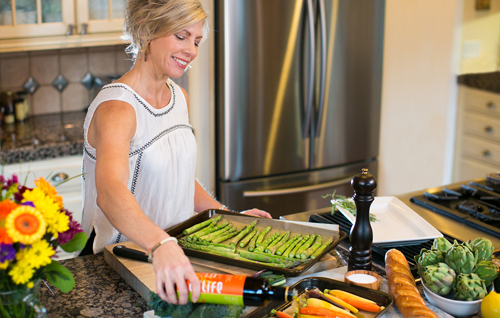Well-suited for smaller gatherings, this attractive and flavorful roulade of turkey breast will be the centerpiece of your festive table. And because I consider fresh-pressed extra virgin olive oil to be Mother Nature’s perfect sauce, I suggest providing the table with extra oil for drizzling.
Ingredients
- 1 teaspoon coriander seeds
- 1 teaspoon fennel seeds
- 1 tablespoon chopped fresh rosemary
- 2 teaspoons chopped fresh sage
- 3 cloves garlic, peeled
- Kosher salt and freshly ground black pepper
- 3 tablespoons extra virgin olive oil, plus additional oil for serving
- 1 whole skin-on turkey breast (5 to 7 pounds), boned, or 2 boneless skin-on turkey
- breast halves (2 to 3 pounds each)
- Eight 1/8-inch-thick pancetta slices, unrolled into strips, or
- 8 strips thick-cut bacon
Directions
Step 1
In a large mortar, pound the coriander and fennel seeds with a pestle to form a coarse powder. Add the rosemary and sage and pound to crush and bruise the herbs. Add the garlic and 1 tablespoon salt and pound until a paste begins to form. Stir in 2 teaspoons pepper and 2 tablespoons of olive oil and set aside.
Step 2
Pat the turkey breast dry with a paper towel and lay it skin side down on a work surface. Rub half the spice paste over the meat. Turn the turkey over and carefully separate the skin from the meat without tearing the skin. Rub the remaining spice paste under the skin. Reform the breast and tie with 4 to 6 loops of butcher’s twine to make a roll. (If you’re using boneless halves, season the two halves, lay them on top of each other, skin side out, and tie them together.) Wrap in plastic wrap and refrigerate for at least 2 hours and up to 24 hours.
Step 3
Position a rack in the center of the oven and preheat to 350°F.
Heat the remaining tablespoon of olive oil in a 12-inch skillet over medium heat. Add the turkey breast and sear until golden-brown on all sides. Transfer the breast, seam side down, to a roasting pan fitted with a rack. Crisscross the pancetta over the top of the breast.
Step 4
Roast until the internal temperature reaches 165°F on an instant-read thermometer, 1 1/4 to 1 1/2 hours. Let the turkey breast rest for 15 to 20 minutes.
Step 5
Remove the pancetta and chop or crumble it. Remove the butcher’s twine. Slice the turkey breast into 1/4-inch slices and serve, sprinkled with the pancetta. Serve additional olive oil on the side.
Serves 7 to 9—Recipe from Fine Cooking, Issue 107




